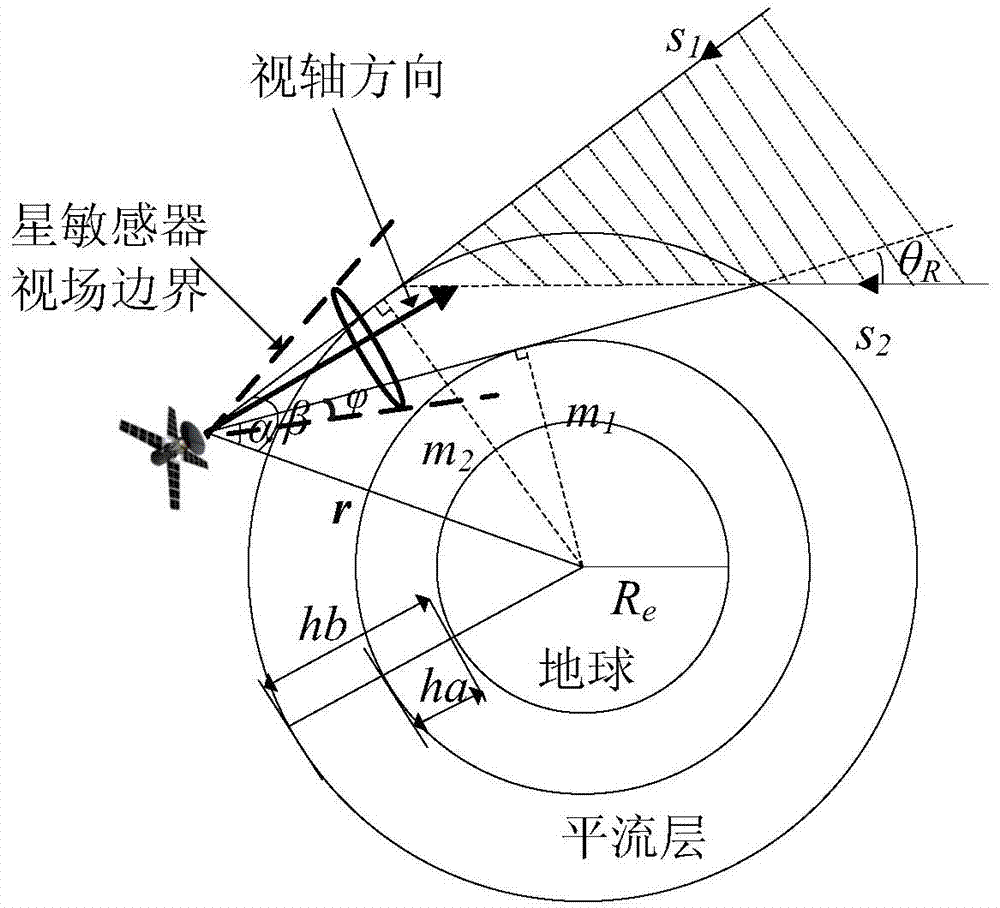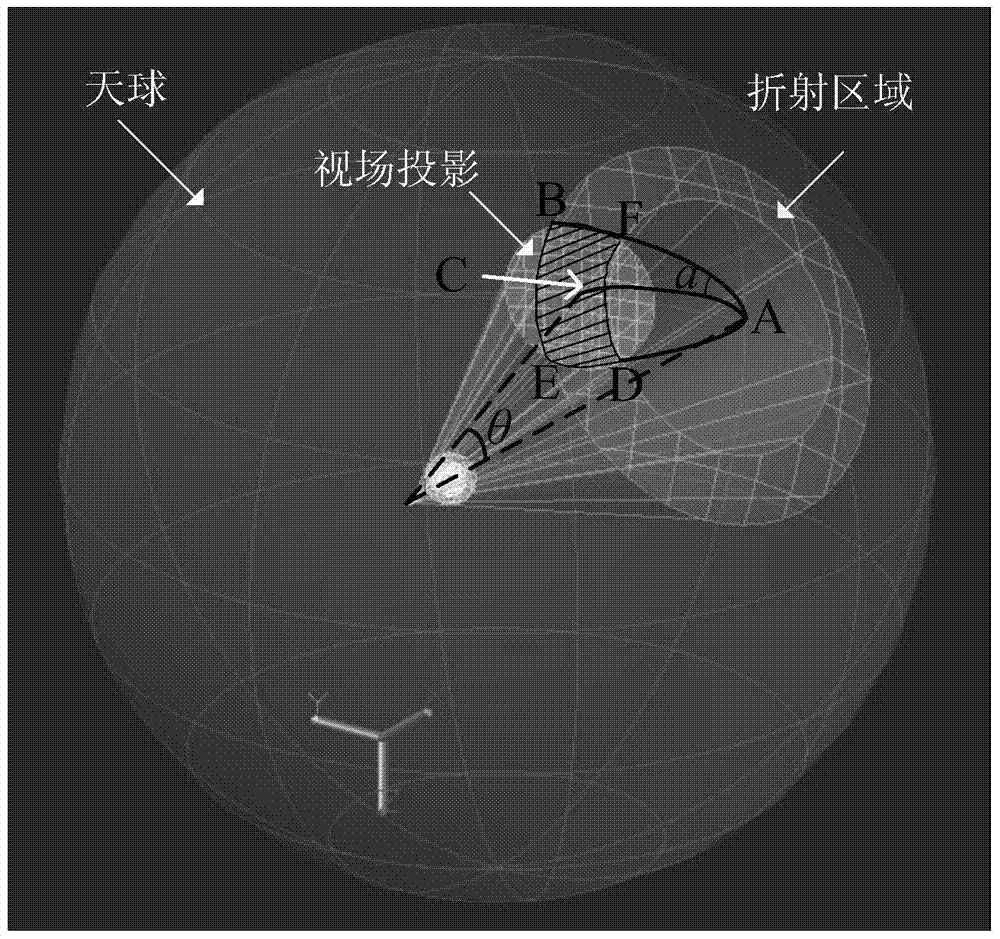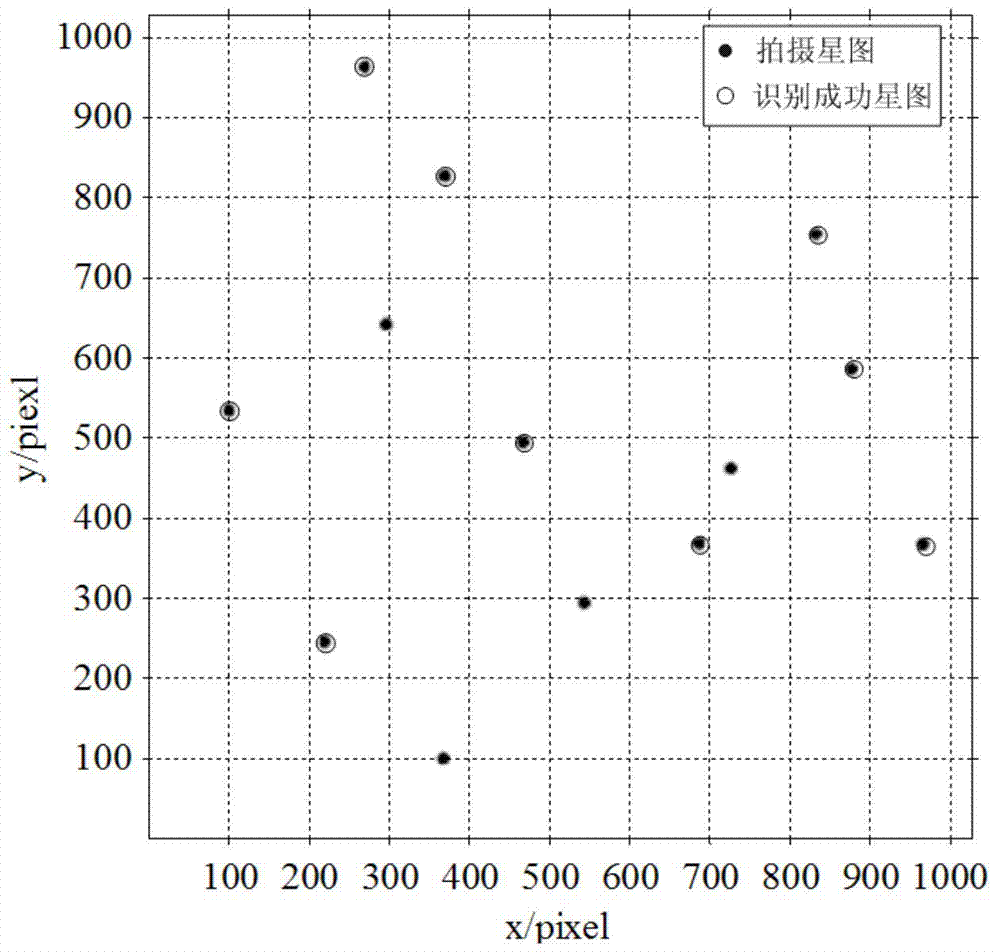Star light refraction satellite autonomous navigation method based on single star sensor
A star sensor, star light refraction technology, applied in the field of star light refraction satellite autonomous navigation, can solve problems such as affecting navigation accuracy
- Summary
- Abstract
- Description
- Claims
- Application Information
AI Technical Summary
Problems solved by technology
Method used
Image
Examples
Embodiment Construction
[0046] The present invention will be further described in detail with reference to the accompanying drawings and embodiments. The invention is a self-navigation method for a starlight refraction satellite of a single star sensor, comprising the following steps:
[0047] Step 1: Install the star sensor on the satellite according to the best installation angle;
[0048] In satellite autonomous navigation, the refraction height is generally selected from 20km to 50km according to the thickness of the stratosphere, that is, figure 1 In ha=20km, hb=50km; assuming that the star sensor is installed in the satellite orbit plane, the vector of starlight is s, then by figure 1 The starlight that meets the equation (1) can be received by the satellite after being refracted. A star whose light has not been refracted is a normal star, and a star whose light has been refracted is a refracting star.
[0049] α - θ R ...
PUM
 Login to View More
Login to View More Abstract
Description
Claims
Application Information
 Login to View More
Login to View More - R&D
- Intellectual Property
- Life Sciences
- Materials
- Tech Scout
- Unparalleled Data Quality
- Higher Quality Content
- 60% Fewer Hallucinations
Browse by: Latest US Patents, China's latest patents, Technical Efficacy Thesaurus, Application Domain, Technology Topic, Popular Technical Reports.
© 2025 PatSnap. All rights reserved.Legal|Privacy policy|Modern Slavery Act Transparency Statement|Sitemap|About US| Contact US: help@patsnap.com



